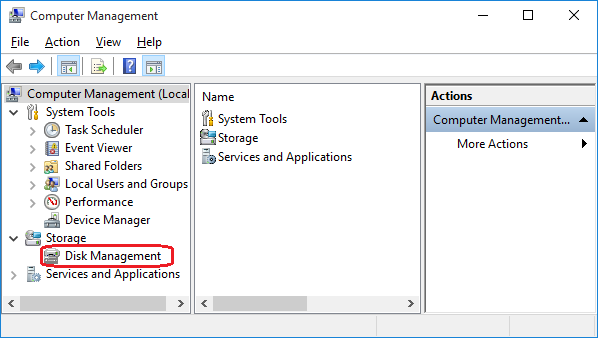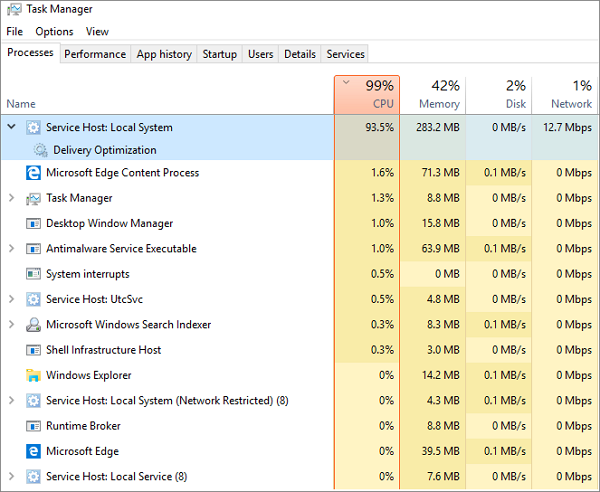


- #Local disk manager serial number
- #Local disk manager full
- #Local disk manager software
- #Local disk manager code
- #Local disk manager professional
In addition, Paragon Connect VD technology, which works with virtual disks as if they were physical, is now included.
#Local disk manager full
#Local disk manager software
The software provides users with tools for data safety and recovery, data migration for physical and virtual environments, partition alignment and management, wiping technologies, and partition conversion.
#Local disk manager professional
If ( $ Software Group has announced its new Hard Disk Manager 11 Professional software. # To maintain compatibility with old Powershell versions The drive has two partitions, one small FAT16 and the “hidden” NTFS (partition 3).
#Local disk manager serial number
The storage device serial number is represented as ’53R1ALNUMB3R’.
#Local disk manager code
Here’s part of the code I use that work both old and recent Powershell versions. Get-Disk | Select-Object Number,SerialNumber I use the HDD/SSD serial number in order to mount the drive and run the script. Because it stores critical/sensitive data, I prefer to hide the partition rather than allowing Windows to mount it automatically, and only use the script to unhide the partition, backup the date with robocopy, and hide the partition again. I have a script I use to backup data using robocopy. Get-Disk |Where-Object PartitionStyle -eq 'RAW' |Initialize-Disk -PartitionStyle MBR -PassThru |New-Partition -AssignDriveLetter -UseMaximumSize |Format-Volume -FileSystem NTFS -Confirm:$false It is convenient to use it when connecting a new disk: The next PowerShell one-liner will initialize all new connected RAW-type disks, create the partition table on them and create an NTFS partitions with the maximum available size. If there are OEM partitions on a disk ( OEM recovery partition, EFI partition, System Reserved), use the RemoveOEM parameter to remove them:Ĭlear-Disk -Number 1 -RemoveData –RemoveOEM To delete all partitions from disks and completely clear data, run the commandĬlear-Disk -Number 1 -RemoveData -Confirm:$false Get-Partition –DiskNumber 1,2 | Remove-Partition -Confirm:$false To remove all partitions on disks 1 and 2 without confirmation, run this command: Let’s format new partition in the NTFS and set the DBData volume label:įormat-Volume -DriveLetter L -FileSystem NTFS -NewFileSystemLabel DBData -Confirm:$false Set-Partition -DriveLetter U -IsActive $true Formatting a partition with PowerShell If you want to make a partition active, this command is used: Resize-Partition -DriveLetter L -Size $MaxSize $MaxSize = (Get-PartitionSupportedSize -DriveLetter L).SizeMax Then you can extend the size of the partition to the maximum: Get-PartitionSupportedSize -DriveLetter L | Format-List If you want to expand the existing partition, first of all display the available unallocated space to extend this partition: Set-Partition –DriveLetter L -NewDriveLetter U You can change the assigned letter using this command: New-Partition –DiskNumber 1 -AssignDriveLetter –UseMaximumSize To assign a letter automatically, the AssignDriveLetter parameter is used ( sometimes Windows doesn’t assign a drive letter automatically ). If you want the partition to occupy all available disk space, use the UseMaximumSize attribute. New-Partition –DiskNumber 1 -Size 10gb -DriveLetter L Let’s create a 10 GB partition and assign the letter L: to it: To create a new partition on a disk, the New-Partition cmdlet is used. You can try to recover the partition table and data on your RAW disk as follows. Please note that a disk may have the RAW status when the partition table is corrupted.


 0 kommentar(er)
0 kommentar(er)
